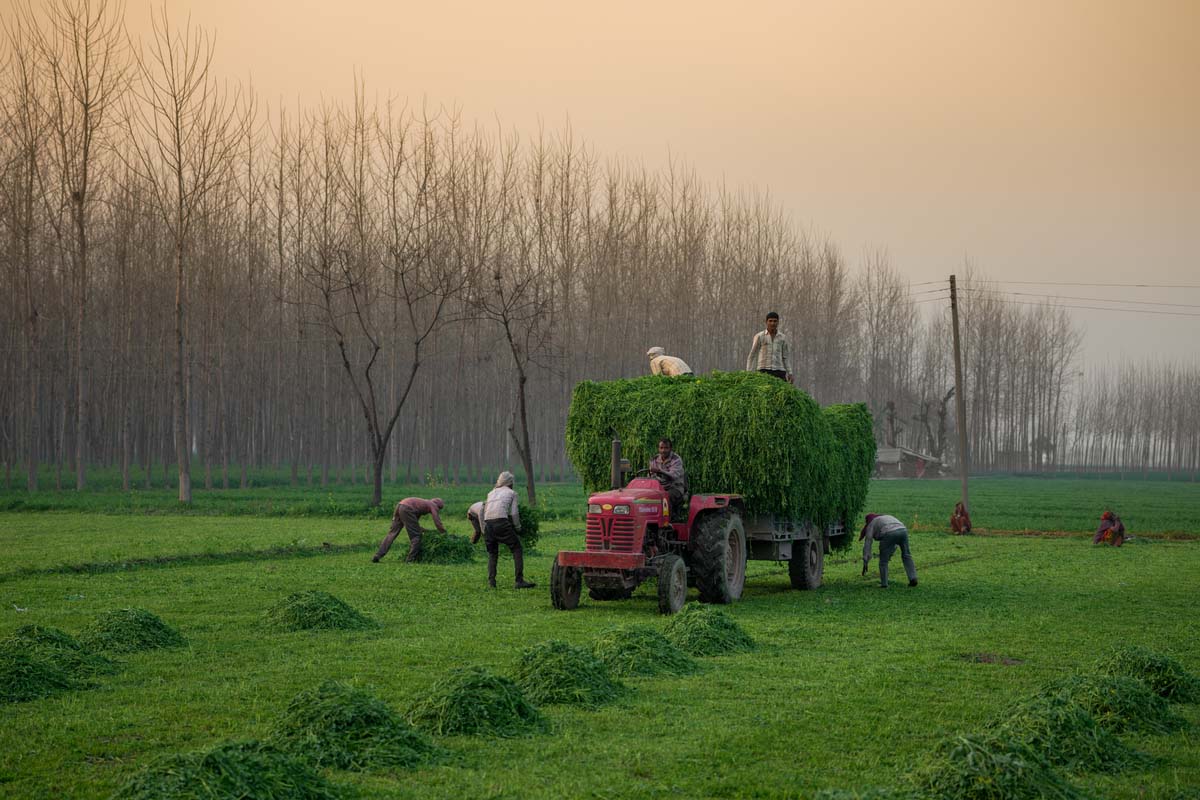Market Reality
India's equity markets, long buoyed by strong economic growth and rising corporate earnings, are now facing a sharp and prolonged correction.
The third imbalance has emerged in the overall foodgrains basket between cereal crops on the one hand and pulse crops on the other hand.

(Representational Image: Getty Images)
One saving grace of India’s increasing economic difficulties has been that farmers have continued to work with perseverance and courage in difficult conditions. The Prime Minister acknowledged this in a recent speech announcing the extension of the free food scheme till November when he said that we can do this only because of the hard work done by farmers.
While this tenacity and hard work of our farmers should be widely acknowledged, it also needs to be recognised that important imbalances have emerged in our farm sector largely due to policy distortions and these need to be corrected soon. The first of these relates to regional imbalances. While to some extent some imbalances were inherited from colonial times, the more pronounced trend started about 55 years back with the introduction of the Green Revolution technology under which certain favorably endowed areas were selected for more intensive farm development using subsidized chemical fertilizers, pesticides, electricity and water.
Advertisement
Hence increase of regional disparities was inherent in this strategy as most of the available resources were to be concentrated in some areas. Within about a decade it became clear that a relatively small number of the country’s districts were emerging as granaries of the country. These districts were mainly in the north, with a few pockets elsewhere (such as in coastal areas), while the eastern and central parts with a higher number of Adivasis received less resources.
Advertisement
With the passage of time it became clear that while the neglected areas suffered, even the surplus areas were experiencing many unforeseen problems because of the green-revolution technology which emphasized monocultures, uprooting of traditional time-honoured seeds, crops and cropping patterns and excessive use of water – all these leading to quick degradation of soil quality, depletion of once-abundant water, besides environmental and health problems.
Excessive mechanisation led to unemployment of farm workers, more social alienation and discontent. Thus, it became clear that even surplus states were suffering under the existing conditions of regional disparities. This tragedy was compounded when in the second stage of the Green Revolution the problem-ridden model was sought to be imposed on those districts and states which had been left behind, entirely forgetting that these areas were even less suited for this kind of farm development requiring expensive and excessive inputs.
In this pursuit, various region-specific strengths were forgotten and ignored. These included a rich diversity of traditional seeds, biodiversity, several complex mixed cropping methods based on scientific reasoning, diverse ways of conserving and harnessing water resources while also maintaining the natural fertility of soil. These strengths were rich in some of the Adivasi areas, but officials did not care and characterised the farming of these areas as most backward.
What is really important is that the need for development of regions in accord with their own special conditions should be respected and an effort should be made to understand and benefit from traditional technologies, practices and seeds of various regions. The precept of low costs should be followed, and small farmers should be helped to protect health, environment and sustainability. The tendency of imposing expensive, dependence-enhancing technologies on farmers of every region or uprooting their traditional wisdom and seeds should be given up entirely.
Once the genius of farmers can grow in accordance with the agro-climatic conditions of a region and the requirements of equity and sustainability, the balanced farm development of all regions will be ensured. A related imbalance that emerged was in various kinds of grains – wheat and rice being the favoured grains in official priorities while coarse cereals or millets suffered from neglect. This too was unfortunate as most millets are highly nutritious and are particularly rich in micro-nutrients and minerals. It is not only because of their nutrition value that millets deserve a place in the fight against hunger.
These are known to be more hardy crops and can grow well in situations of water stress and low fertility. In areas where there is more poverty and conditions for farming are not ideal, millets have been providing means of sustenance. These crops are more amenable to organic farming and can be sold as health foods to fetch a good return for small farmers living in poverty. Hence the government must make up for past neglect by extending more support to millets.
The government should include more millets in its procurement operations and allocations for public distribution system and nutrition programmes. The progress in this context has not been encouraging and much remains to be done. The third imbalance has emerged in the overall foodgrains basket between cereal crops on the one hand and pulse crops on the other hand. A wide variety of pulses have been an indispensable component of Indian food, used directly or in a variety of processed forms. This is just not a matter of taste as pulses are also a rich source of protein.
Nutrients found in cereals and pulses complement each other very well to create wholesome and nutritious food, as seen in the sustainability of the daal-roti and daalbhaat combination over centuries. In addition, pulses being leguminous crops help to fix nitrogen and keep the soil fertile when grown in mixed farming system with cereal crops or when rotated with cereal crops. But such time-honoured farming systems began to break down with the introduction of green-revolution monoculture.
Pulse production decreased in some areas and pulse per capita consumption too has been declining so that the most staple form of protein availability has declined for many people in India. These various imbalances need to be corrected by suitable improvements and corrections in policy.
(The writer is a freelance journalist who has been involved with several social movements)
Advertisement